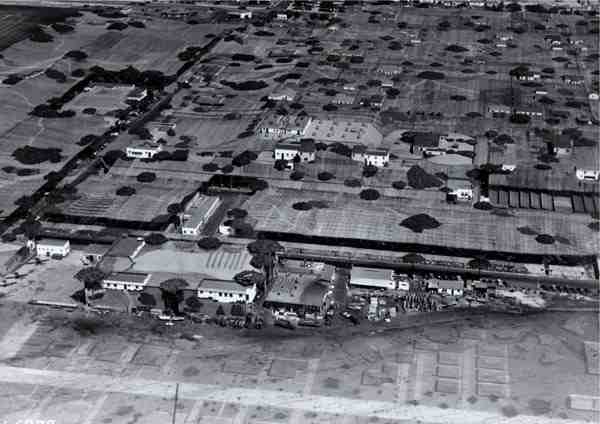Thursday, June 10. 2010
Good place to stop when passing through Reading, PA: The Mid-Atlantic Air Museum.

Sunday, June 6. 2010
In 1973, Nixon and Kissinger used South Vietnam as a tool to widen the split between China and the Soviet Union. In 2010, Islamists, Iran and other Muslim states use the Obama administration as a tool to split the US from Israel.
Most of us who are still aghast at the Democrat controlled US Congress dooming South Vietnam to fall by cutting off promised arms and air support necessary to its survival also criticized Nixon and Kissinger for walking into the duplicitous trap of the Peace Accords of 1973. The North Vietnamese rulers had a long, documented history of promising one thing while doing another.
However, Nixon and Kissinger had a bigger game afoot, to reduce tensions with China for our purpose of widening its rift from the Soviet Union, which added pressure on the Soviet Union.
In effect, South Vietnam was a tool to what they had good reasons to believe was a bigger, more important end. Surely, neither Nixon nor Kissinger expected Nixon’s Watergate downfall and the left Democrats to sweep to Congressional power.
There’s a difference now.
Obama and Clinton may be thinking they are using Israel as a tool to cuddle up to long and continually intransigent Arab states. But they are actually tools themselves of those who seek nothing else than the downfall of Israel and the retreat of the US from confronting their clear goals of dominating the Middle East and, via its oil, Europe.
Obama and Clinton don’t deny the ongoing efforts of Iran in going nuclear or sending men and arms to those attacking US, Iraqi and Afghan troops, to Syria, Lebanon and Gaza. They just avoid the necessary countermeasures and march forward in repeatedly proven delusions of Iran changing its spots and of kumbaya as a replacement for reality.
Nixon and Kissinger had a world view realistically based on US interests furthering a world order of surer peace. Obama and Clinton, fully consciously or not, have a world view based on US interests being a barrier to a world order of peace, that ignores or excuses or refuses to confront the reality of foes’ unrelenting hate of the US and the West, encouraged by Obamanesque fecklessness.
Oh! Another bit of reality that Obama and apologists can try to ignore: "Iran Revolutionary Guards ready to escort Gaza ships"
- Thanks again, Insty. We appreciate your appreciation, and encourage Insty folks to peruse our eclectic site. You might like it. Or you might not.
P.S.: Hillary Clinton warns Iran not to pull a stunt. Wake up Hillary, "Iran called our bluff long ago."
Saturday, May 29. 2010
David Brooks wrote a much-linked piece on the two enlightenments last week. Far better and more amusing is this ripping apart of Brooks' essay. It's tough to get away with BS in the internet era.
That is quite correct that there was no "British Enlightenment." Here's our post, with a good link, on the Scottish Enlightenment.
And another good one: How The Scots Invented The Modern World
Sunday, May 2. 2010
A small island group near the coast of mainland China, Quemoy, gave us lessons that we need to remember in dealing with Iran. There cannot be an analogy between geographies, actors, and the times. But lessons can be insightful to current circumstances of the primacy of recognizing US interests, the difference between friends and foes, and acting accordingly or failing through dithering and fecklessness.
Few remember the history shaping role in the 1950s of Quemoy.
The defense of Quemoy by Nationalist forces against an invasion from newly Communist China in 1949 effectively stymied mainland China’s objective to take Taiwan and, in the face of world defeatism, demonstrated that the Asian march of communism could be defeated.
The same mistaken line drawn by the Truman Administration placed South Korea and the Taiwan Straits outside the US containment perimeter. This encouraged the Soviet and Chinese support of North Korea’s invasion of the South in 1950.
Preoccupied in Korea, and following an inclination toward stalemate being enough for containment, the US 7th Fleet patrolled the Taiwan Strait to prevent either Communist China or Chang Kai-shek’s rump in Taiwan from attacking the other.
In 1953, President Eisenhower, though believing Quemoy to be indefensible and believing the French position in IndoChina would not hold, allowed Taiwan to heavily reinforce Quemoy, raising the threat level to distract and deter China.
In 1954, however, the Chinese, not to appear deterred, unleashed thousands of artillery strikes upon Quemoy, took another small island over 200 miles north of Taiwan, and skirmishing occurred along and on China’s coast.
Continue reading "Lessons Of Quemoy For Today"
Thursday, April 29. 2010
Thirty-five years ago, South Vietnam fell to the communist North. Twenty-eight years ago, President Reagan addressed the British Parliament at Westminster in his famous “Ash Heap of History” speech, to where tyrants will be sent by those valiantly defending freedom.
Yesterday, I went to Orange County’s “Little Saigon”, Westminster, to attend a forum marking the 35th anniversary of the fall.
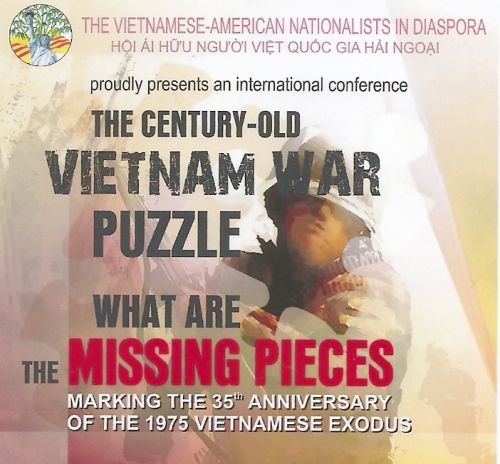
Before the forum, attendees went outside in the Sid Greenstein Freedom Park for a minute of silence before the war memorial there, the only one in the US honoring US and Vietnamese who fought together.
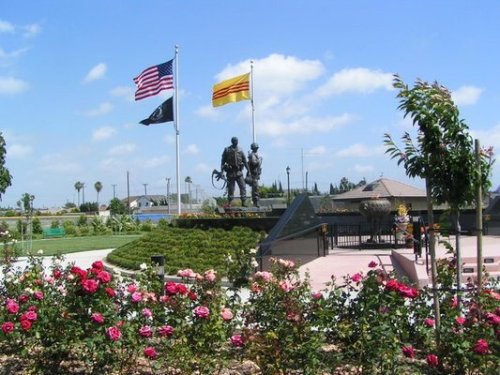
I knew three of the speakers well (and two others less from shared personal experiences, more as acquaintances, but major figures) from many years of collaboration and friendship to not let the Vietnamese and American sacrifices be in vain, to educate new generations in the lessons personally witnessed and learned...
Continue reading "A Tale Of Two Westminsters: 28 and 35 Years Later"
Wednesday, April 21. 2010
Human culture developed during the past 50,000 years, despite homo sapiens being around for much longer (300-400,000 years).
One theory is that certain rapid climate changes during the most recent glaciation phase, known as the Dansgaard-Oeschger events, are what prompted the development of complex cultures.
Adaptability is a human strength. The Bug Community seems pretty good at that too.
Sunday, April 11. 2010
A re-post from June, 2008. Was it that long ago? Seems like yesterday...It was a fine trip.
We took a day, last week, to hop the train over to Lake Como (and to stop by the Como Duomo), and took the fast ferry up to Villa Carlotta in Tremezzo - and then across the lake to Bellagio to see the equally renowned gardens of Villa Melzi.
The 17th-18th century Villa Carlotta and its gardens were a traditional and necessary stop on the "Grand Tour" of "the Continent." We anglophiles like to follow in those old paths.
It is impossible to capture on camera the feel of such vast and varied gardens, which are, in effect, both botanical gardens with worldwide collections of plants, and ornamental gardens designed to impress as much as to delight - some formal Italian and some English-style.
For example, these gardens have bamboo groves, Sequoia groves, acre-sized plantings of azalea, palm collections, collections of cacti, citrus arbors, etc. Even a turtle pool with happy and smiling American southern Red-eared Sliders and Cooters.
This photo is the entrance:
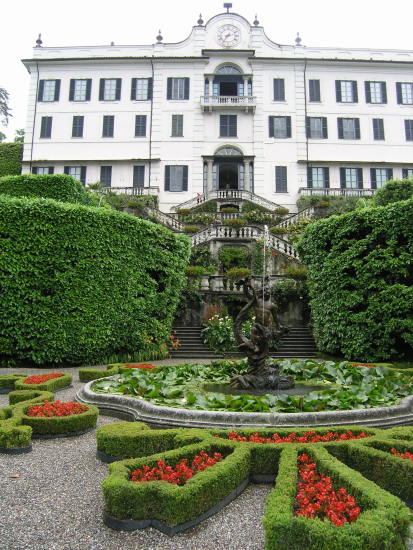
More of my mediocre photos on continuation page below -
Continue reading "Villa Carlotta"
Tuesday, April 6. 2010
"Professor Arkes discussed the Four Horsemen, four conservative justices on the Court during the 1930s who tried to block many of President Roosevelt's New Deal programs. He examined many of the Supreme Court cases from the Roosevelt era."
Those four guys saved us. Says the Prof: "We are the beneficiaries of the world that Sutherland and colleagues preserved for us."
Video from 1996. (h/t, No Left Turns)
Friday, March 12. 2010
 Founder of the American Red Cross Nursing Service. It's her birthday. Founder of the American Red Cross Nursing Service. It's her birthday.
She said she didn't do it because she was moved by suffering, but because she liked the work.
I prefer people who do fine things because they want to, not because of pious self-congratulatory virtue or grandiose notions of changing the world.
Tuesday, March 9. 2010
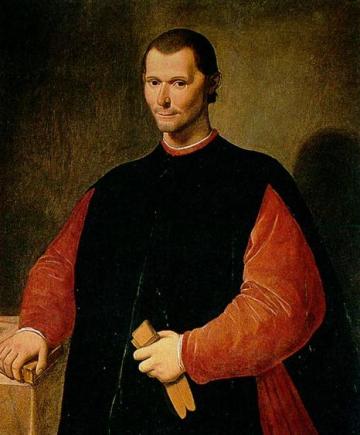 Alas, the man's name does a disservice to the brilliant Florentine Renaissance political scientist and student of human nature that he was. Alas, the man's name does a disservice to the brilliant Florentine Renaissance political scientist and student of human nature that he was.
However, I did not know that he wrote comedy on the side. Another Renaissance Man, as it were.
I like his face: shrewd and discerning, but ready to laugh.
"Princes and governments are far more dangerous than the other elements within society.”
- Niccolo Machiavelli
Sunday, March 7. 2010
I tend to think we still live in a Greco-Roman civilization. This from George Mason Prof Steven Davies:
Wednesday, March 3. 2010
It's an 11,500 year-old temple in southeastern Turkey. h/t to a good piece at Protein.
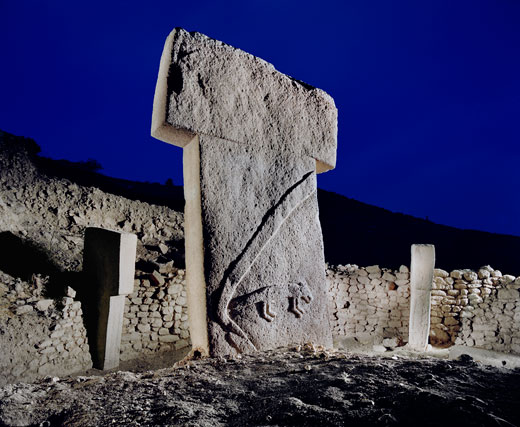
Thursday, February 25. 2010
Few of our readers recall tunneling to the barn during the big New England nor'easter blizzard of March 11, 1888.
Here's the weather story of that snowstorm (which tragically omits the role of AGW - we should never let an ancient weather crisis go to waste).
Some photos:
Longacre Square, NYC (Now Times Square):

Somewhere in Manhattan:

Somewhere in Brooklyn:

Main St., Stamford, CT, from this Stamford history site with more photos:
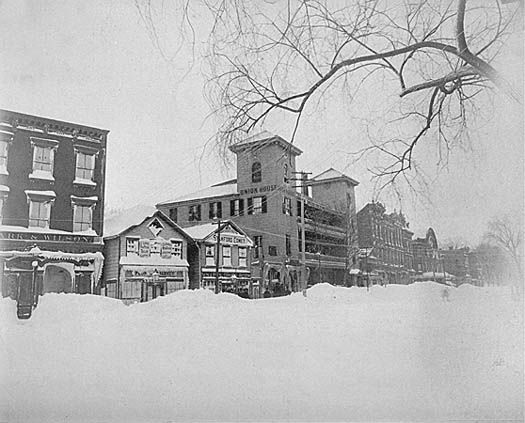
Train tracks in Norwalk, CT:
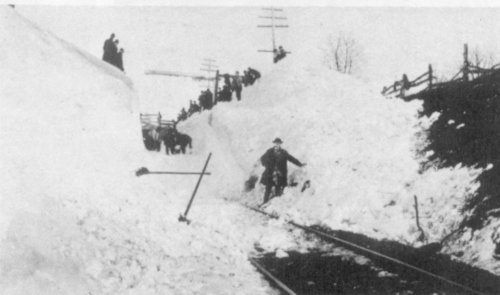
Sunday, February 21. 2010
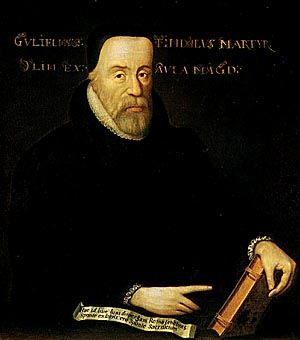 William Tyndale was the Oxford-educated polyglot theologian and reformer who produced the first printed Bible in English. William Tyndale was the Oxford-educated polyglot theologian and reformer who produced the first printed Bible in English.
His translation was from Erasmus' Greek-Latin Bible, the same one which Luther used to translate his German Bible. Tyndale's Bible was banned in Britain: you can't trust the rabble to read it themselves. He famously said that he wanted a Bible that "every plowman" could read the Scripture for himself.
Tyndale was executed by Henry Vlll for his efforts. It is believed that Thomas More was pushing for the execution.
It is thought that up to 80% of the King James Bible - the most printed book in the world - is Tyndale's product. For hundreds of years after the first printings, Protestants avoided the Anglican King James Bible, preferring the Geneva Bible (which is very similar). The Pilgrims used the Geneva Bible and, no, Anglicans are not historically Protestants and neither are their American Episcopalian brethren.
Excellent summary of the history of the Bible in English here.
Thursday, February 18. 2010
December 7, 1941. The Pacific Clipper, Queen of Pan American Airways fleet of flying boats is 6 days out of San Francisco, bound for Auckland, New Zealand. Captain Robert Ford receives a coded message: Japanese attack Pearl Harbor...Implement War Plan A...Proceed to Auckland, NZ...Maintain radio silence...Wait for instructions...Your aircraft is a strategic resource-it must not fall into enemy hands under any circumstances
Pan American Airways bases all across the Pacific were captured. Returning to the US west coast by the Pacific Clipper did not seem possible. A week of waiting, then another coded message:
DEC 14, 1941: Do not return to Hawaii. Do not return to US west coast...Strip aircraft of all markings and identification...proceed west...maintain radio silence...deliver aircraft to Marine Terminal, LaGuardia, NY. Good luck.
Tuesday, February 16. 2010

You probably already knew that the so-called Sphinx had been deeply eroded by rain from when the Sahara was wet, that the Sphinx has been buried under sand through most of its lifetime, and that the face is likely not the original. What I did not know is that the body of the sculpture was not constructed, but rather carved out of a single piece of limestone in the middle of a quarry.
Good update at Smithsonian.
Thursday, February 11. 2010
As Mrs. BD quips, "Lorenzo was sort of a Renaissance Man, wasn't he?" Lorenzo took an active role in designing the Villa Medici in Poggio a Caiano, 12 miles north of Florence, in 1485.
The design of this rural Medici farming villa, which so much impressed and influenced Palladio, was revolutionary in several ways, not the least of which were its orientation outwards rather than towards an inner courtyard and its lack of defensive fortifications. (Lorenzo was famously casual about security.)
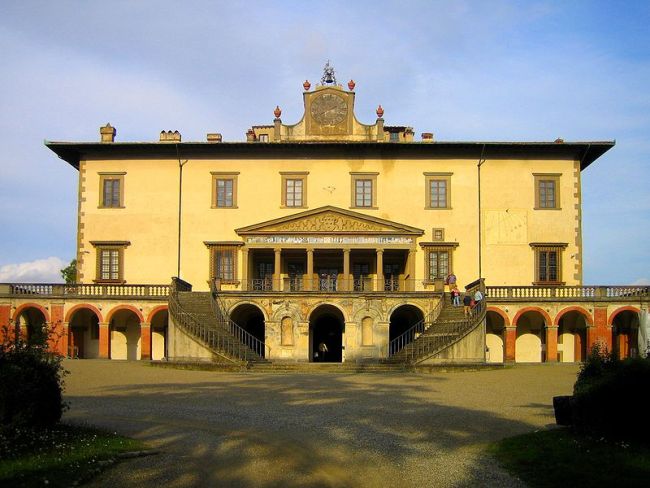
Sunday, February 7. 2010
I do not know how many of Lorenzo di Medici's country villas are extant, but he helped design a few of them, one of which was an architectural inspiration for Palladio.
This one, sitting on the hills overlooking Florence, was built by Cosimo for his second grandson Giovanni, and came into Lorenzo's hands after his brother was assassinated by a cabal which included the Pope. It became one of Lorenzo's favorite hangouts with his philosopher, artist, and poet pals (and girlfriends).
(By the way, we recommend staying in Fiesole when visiting Florence, and it's just a 15-minute bus ride down the hill. November and May are good months.)
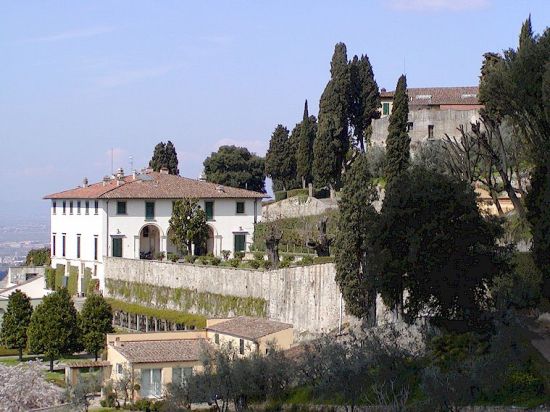

Saturday, February 6. 2010
In the (now, sadly, defunct) New York Sun:
Given the nearly total absence of fanfare, you could be excused for not knowing that this was the quincentenary of Andrea Palladio's birth. Generally it is a kind of condescension to treat the great cultural figures of the past as though, in some sense, they were, or needed to be, our contemporaries. And yet a respectable case could be made that, of all the architects who lived before the 20th century, few were as influential as Palladio (1508-80) or came closer, in the arc of their reputation, to being what we would now call a "starchitect."
Read the whole thing.
Here's Wiki on Palladio. Below is a photo of Villa Capra, aka Villa Rotunda, in Vicenza.
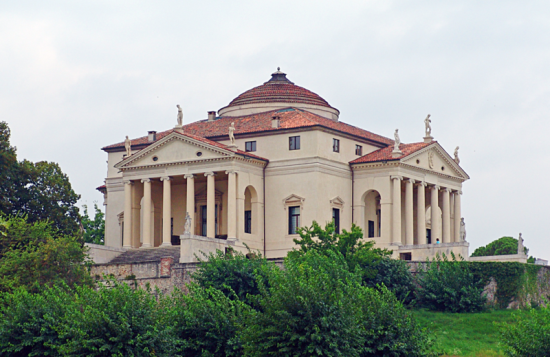
Thursday, January 28. 2010
We have it pretty good these days. From Gene Expression:
Geneticists have long known that the ancestors of modern humans numbered as few as 10,000 at some time in the last 100,000 years. The critically low number suggested that some catastrophe, like disease or climate change induced by a volcano, had brought humans close to the brink of extinction.
If the new estimate is correct, however, human population size has been small and fairly constant throughout most of the last million years, ruling out the need to look for a catastrophe.
Assuming an average census size on the order of 50,000, it seems as if our species stumbled onto a rather "risky" strategy of avoiding extinction. From what I recall conservation biologists start to worry about random stochastic events (e.g., a virulent disease) driving a species to extinction once its census size reaches 1,000. I suppose the fact that we were spread out over multiple continents would have mitigated the risk, but still.... It also brings me back to my post from yesterday, it seems that for most of human history we are a miserable species on the margins of extinction. For the past 10,000 years we were a miserable species. And now a substantial proportion of us are no long miserable (it seems life is actually much improved from pre-modern Malthusianism outside of Africa and South Asia). If only Leibniz could have seen it!
|





 Founder of the American Red Cross Nursing Service
Founder of the American Red Cross Nursing Service Alas, the man's name does a disservice to the brilliant Florentine Renaissance political scientist and student of human nature that he was.
Alas, the man's name does a disservice to the brilliant Florentine Renaissance political scientist and student of human nature that he was. 





 William Tyndale
William Tyndale




